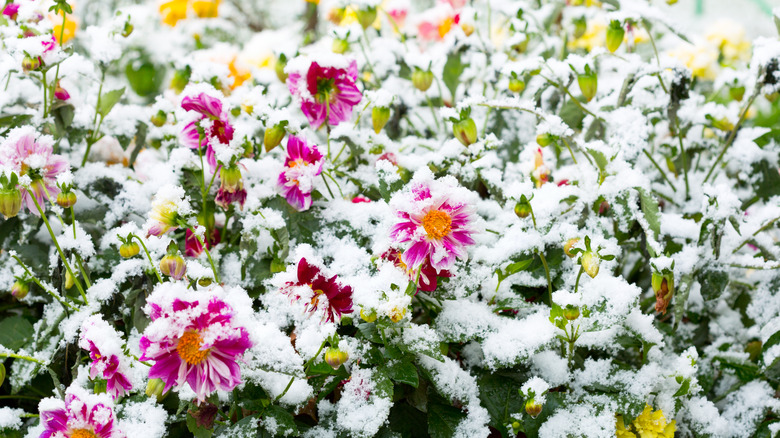Plant This Flower In November For Pretty Purple Blooms In Winter
Winter can feel a little bare once the last of the summer blooms fade, but your garden doesn't have to turn into a colorless plant ghost town. There are several flowers you can plant in fall that will provide blooms in the winter to brighten up your garden, like hellebore (Helleborus orientalis) and snowdrops (Galanthus nivalis). One very popular choice is the snow crocus (Crocus chrysanthus), a lovely small flower perfect for a vibrant winter garden, which usually blooms in late winter or very early spring.
If you love purple, this is the flower for you, as the blooms are a gorgeous bright purple that really stand out in winter, especially in the frost and snow. Snow crocuses are hardy in USDA Zones 3 to 8 and stay small, reaching heights of only 2 to 4 inches.
These flowers may be tiny, but they add stunning color to your garden during a time when your summer bloomers are resting. There are many places you can add snow crocuses to your garden, including in front of existing evergreen shrubs, along your walkways, in rock gardens, and in flower beds around the front porch. While deer typically leave snow crocuses alone, squirrels have an affinity for them and seem to be very talented at finding newly planted crocuses, digging them up, and then eating them. If you have quite a few squirrels around, you could try this natural solution you can whip up to deter squirrels from your yard.
How to plant and care for snow crocuses
Plant your snow crocuses in November before the ground freezes to get the winter blooms you want. However, in northern zones, you may need to get them into the ground between September and October to avoid the ground freezing before you can get them planted. The best location for snow crocuses is where they can enjoy full sun to partial shade. They do best in soil that is on the sandier side, and they won't thrive in clay soil that is too heavy and drains poorly.
Not only do these flowers add color and beauty to your yard during the winter, but since snow crocuses bloom so early in spring, they provide an excellent source of nectar early in the season for pollinators like bees when food is still scarce. Planting a lot of snow crocuses together in rows or groups can result in a stunning display of purple that will really be eye-catching during the winter and early spring when your other flowers have not started blooming yet.
You can also find snow crocuses in yellow or white if you want your garden to bloom with a variety of colors. These lovely winter garden gems require no pruning and will propagate and come back in future years, giving you something to look forward to every late winter to early spring. You may need to thin them out after a year or two if they become overcrowded to avoid them producing fewer blooms.

